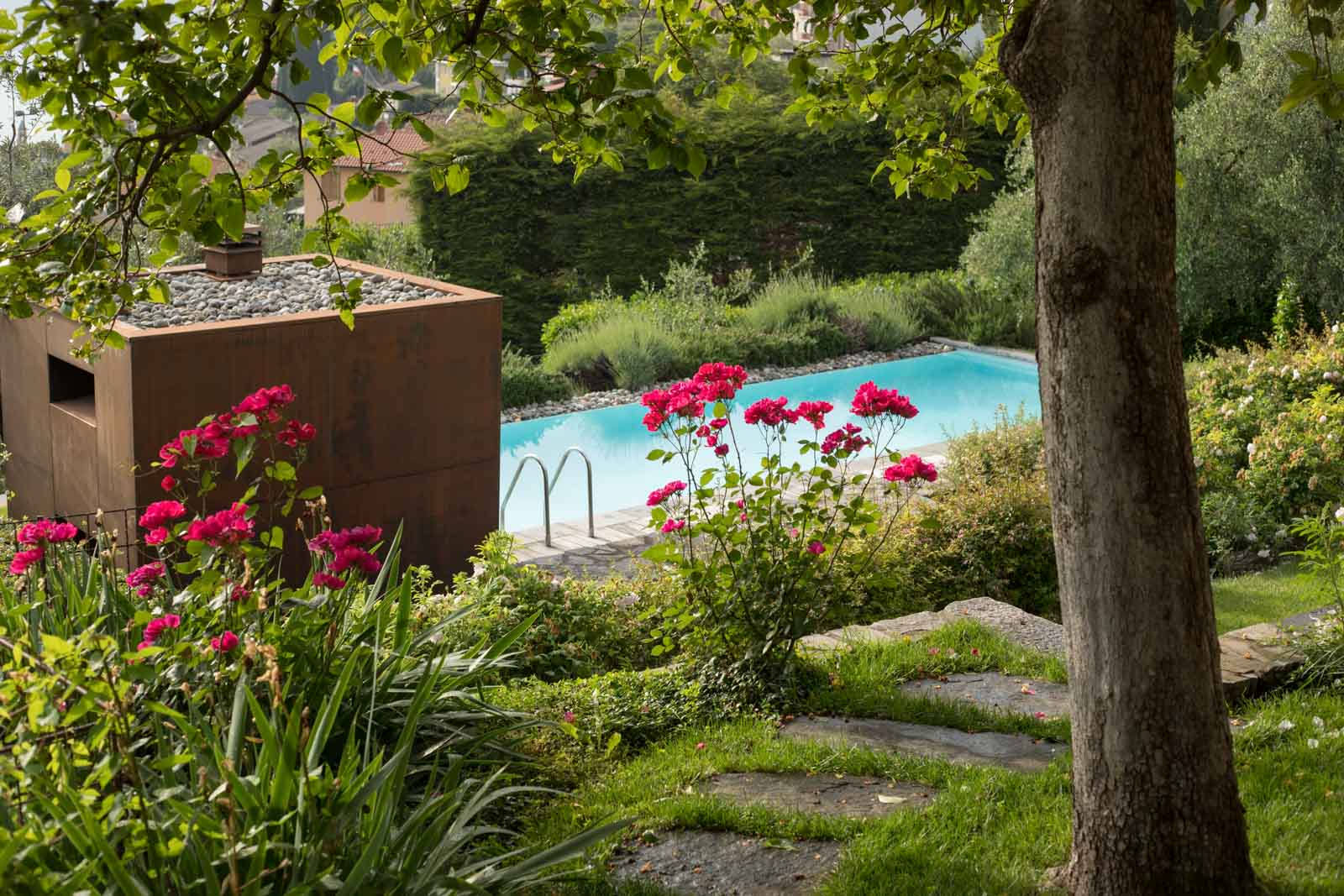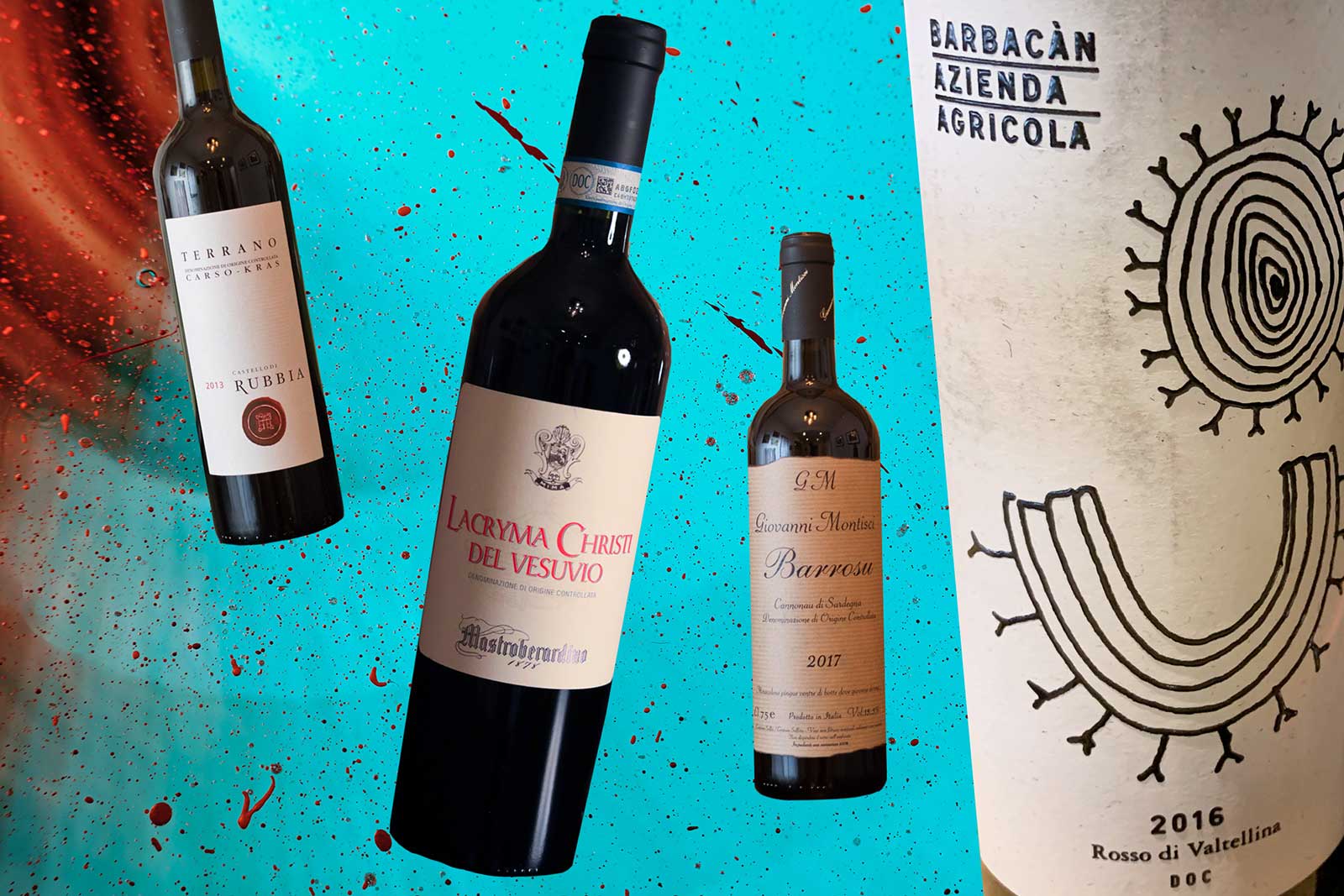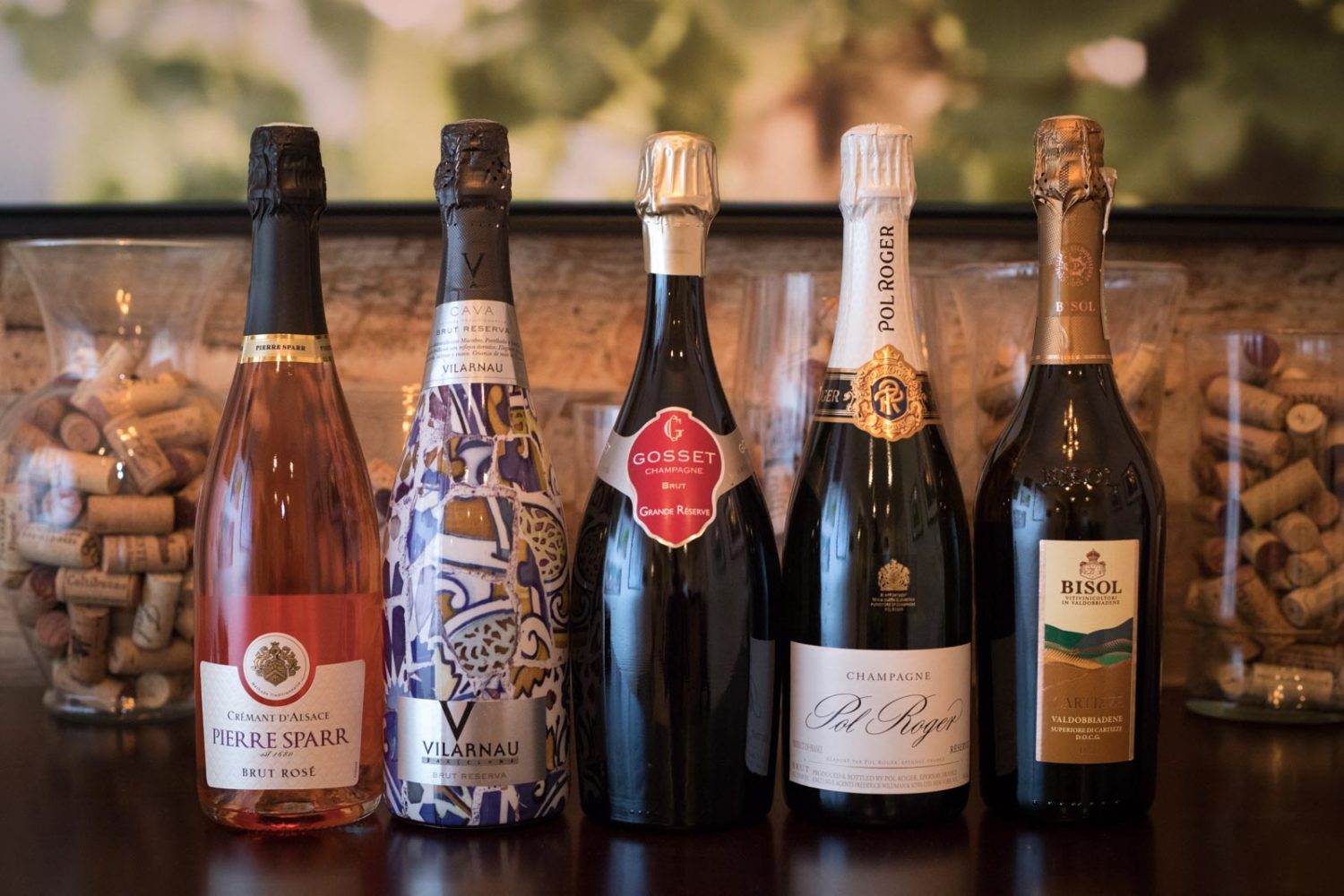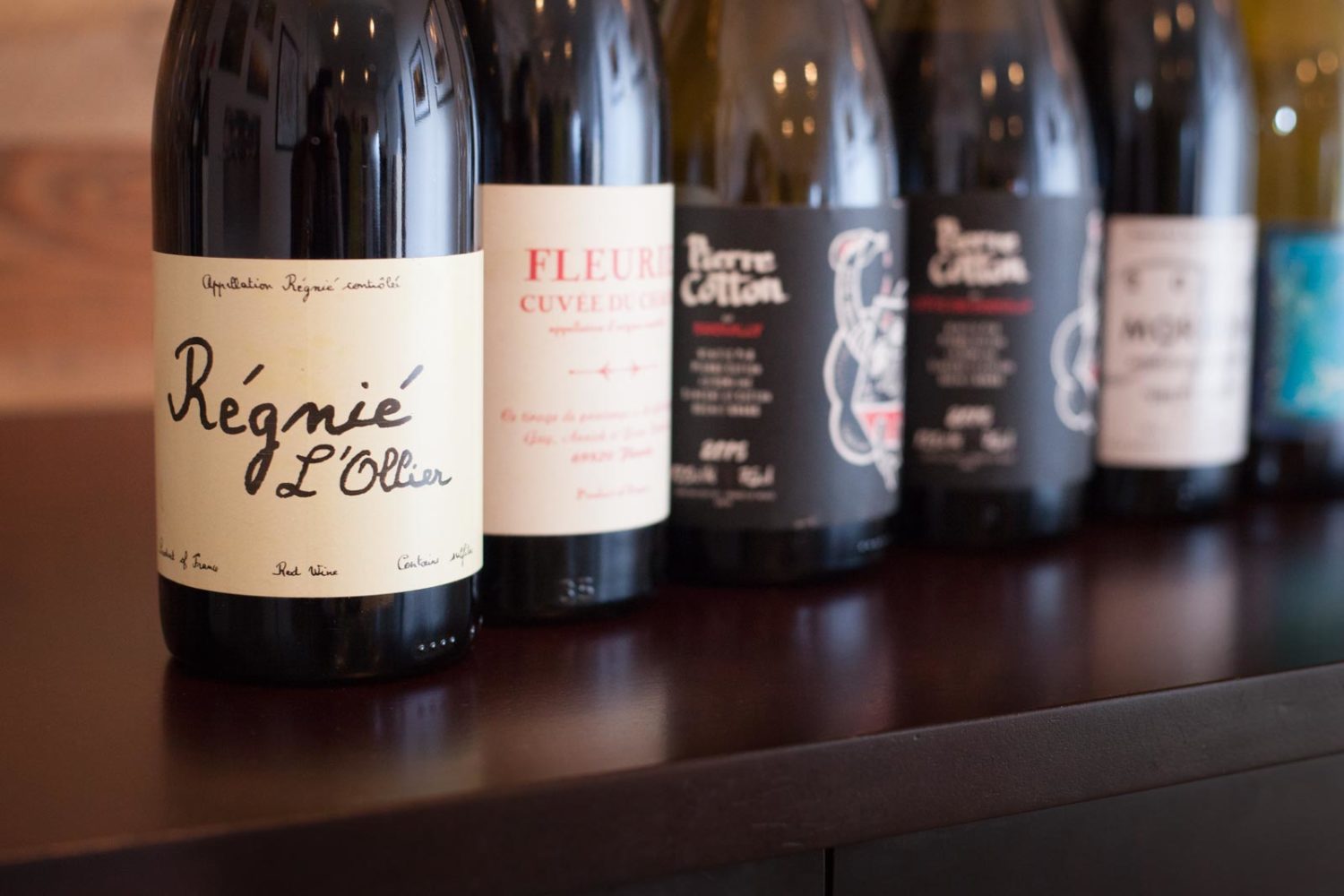What does summer even look like anymore? This year there will be few farmer’s markets, few poolside parties, few backyard barbecues with friends. (And if you are uncomfortable wearing a mask now, imagine what it’ll be like in 100-degree heat around the Fourth of July). While the aforementioned rites of summer can only be filed under “pandemic annoyances,” their absence will nonetheless be uniquely mournful. Fortunately, we still have summer wines that we can geek out over. I imagine that much of my 2020 summer will be spent in quiet contemplation on my porch with a wine that conjures up vestiges of past summers.
But you know what? Given that context, things aren’t so bad.
If your summer plans consist of much the same, consider these seven wines, which are utterly delicious. One of them (Martha Stoumen’s Honeymoon) is largely unavailable already, so consider that a winemaker recommendation for summer (her portfolio of wines is great). Speaking of small wineries with limited supply, six of the seven summer wines listed below come from small, independent wineries, which are exactly the kinds of businesses we need to support right now.
I hope you can find them, snatch them up, and consume them in a peaceful spot this summer while we wait out this terrible menace.
(Note: The Lambert and Ochoa wines have already moved on to the next vintage since I sampled them)
2018 Domaine de L’Hortus “Loup y Es-Tu?”
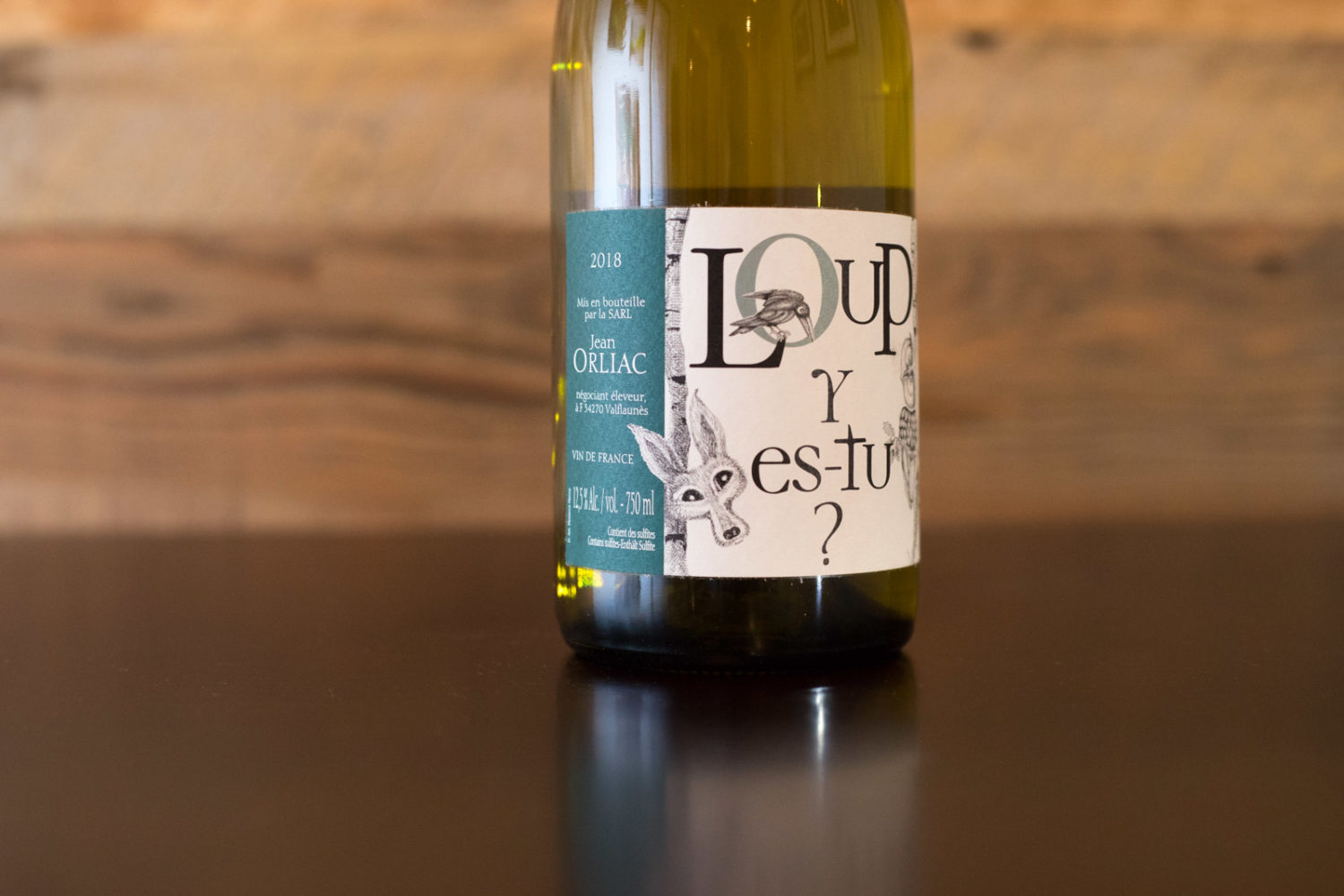
With this deceptively complex and refreshing summer sipper, Domaine de L’Hortus shows that white wines from the South of France can party just as hard as the region’s iconic rosé. The life of this party is Muscat, which accounts for 40% of the blend, adding a hedonistic swath of playful fruit while Sauvignon Blanc provides the backbone to hold it all up. Smelling like ripe honeydew, kiwis and salty air, Loup y Es-Tu? wine is a riot. I would suggest finishing this wine in one night, as it’s structure crumbles a bit by a second night. But its lavish nose and near-glycerin texture make it one of 2020’s most unique wines for me personally. And its further proof that you could spend a lifetime poking around Southern France, unwrapping one vinous surprise after another.
Vin de France (Pic St. Loup)
Grapes: Sauvignon Blanc (60%), Muscat (40%)
Alcohol: 12.5%
Practice: (Practicing mostly organic)
Rating: ★★★★ 3/4 (out of five)
Food-friendliness: Versatile
Value: Very good
2018 Tasca d’Almerita “Antisa” Cattaratto
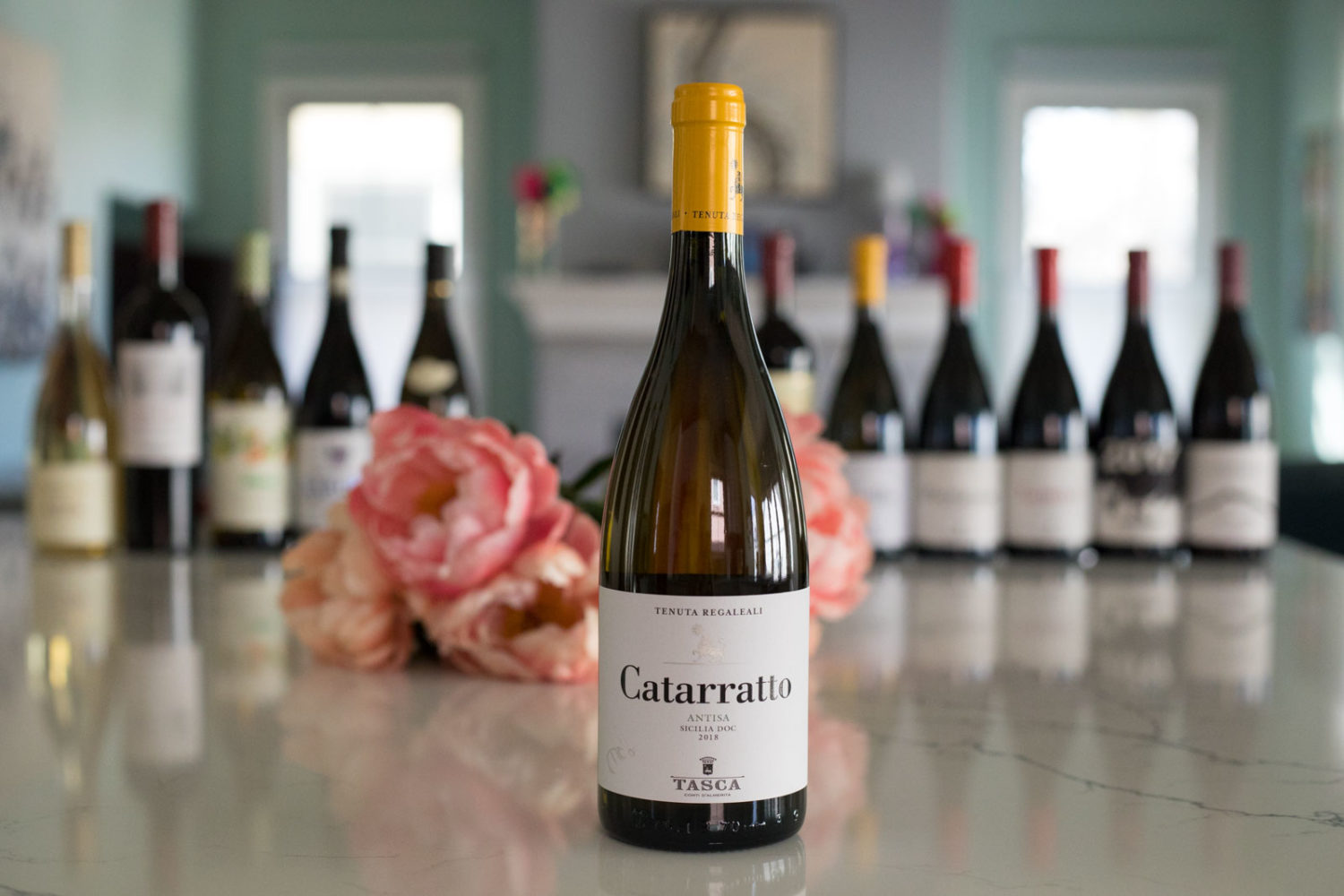
Perhaps it is high time we give Catarratto its due. What is Catarratto, you might ask? Funny thing: one of Italy’s most widely planted white grapes is barely known outside Sicily. That’s because it has largely been used for forgettable, supermarket-style Marsala cooking wine, and not aromatic, playful, party summer wines such as this effort from Tasca d’Almerita. The grape has two biotypes: Commune and Lucido — the latter of which has smaller berries and higher acidity, yielding better quality wines. Right now, plantings of Commune are diminishing while those of Lucido are increasing. But this trend in the vineyards of Western Sicily has done little to change the reputation for Catarratto — that is, unless we start spreading the word about wines like this one.
So what’s it like? Downright jolly, and if the alcohol weren’t a low 12%, I’d say it was dangerous. The nose is fresh and vital, displaying tones reminiscent of pineapple, honey and mint, as well as honeydew. Like the Loup y Es-Tu? listed above, it had a distinct saltiness to the texture that is inviting and appealing, yet a fuller body. Given it’s price point, I think its an excellent value, too.
Sicilia DOC (Sicily)
Grapes: Catarratto Bianco Lucido (100%)
Alcohol: 12%
Practice: (Certified sustainable)
Rating: ★★★★ 3/4 (out of five)
Food-friendliness: Versatile
Value: Exceptional
2018 Mortellito “Calalancua” Bianco
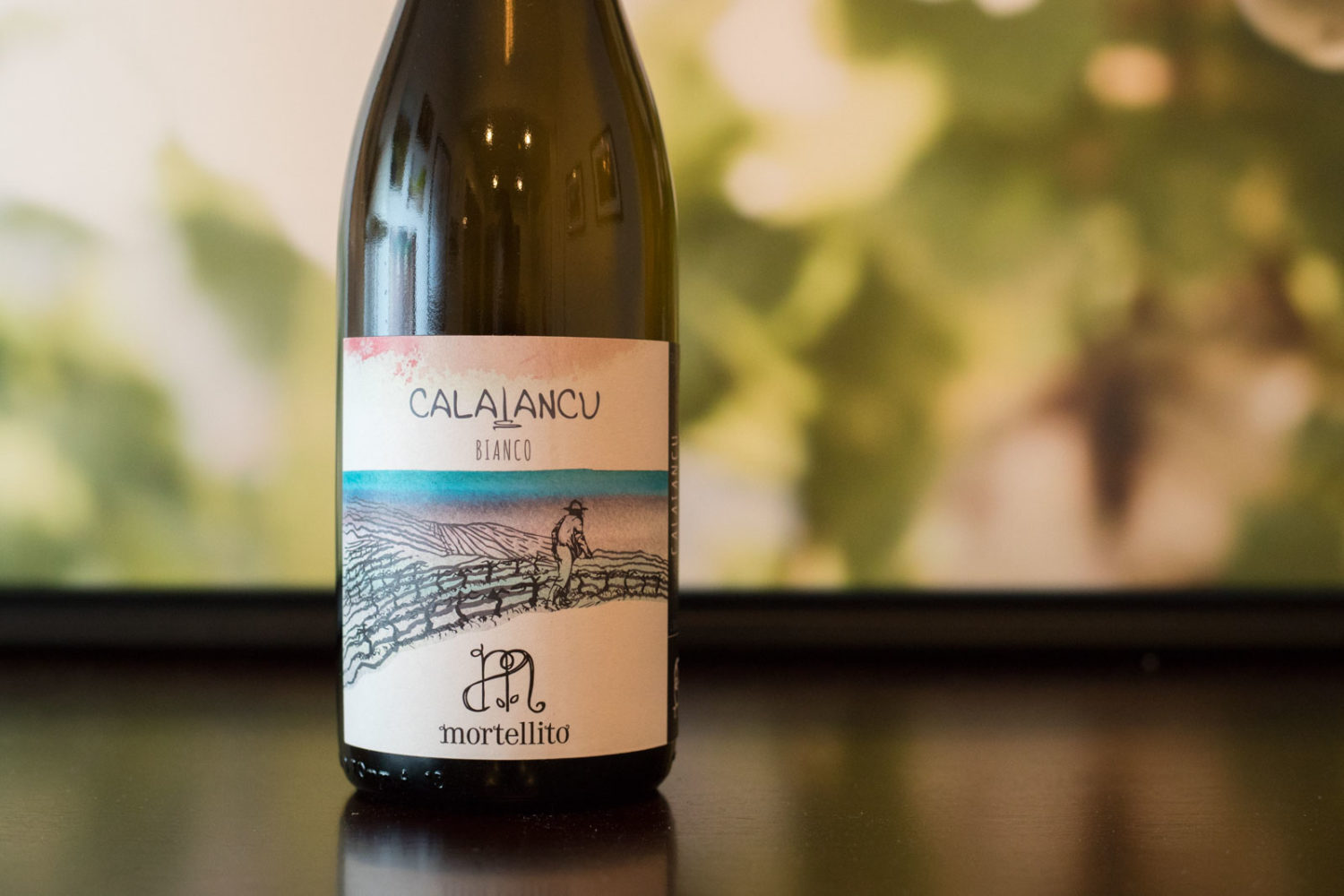
From one of Sicily’s largest wineries to one of the smallest … and another porch-pounder that offers a complex narrative, but only if you are in the mood to seek it out. Mortellito is a rather new winery, where only 15 of the 25 hectares of land are devoted to grapevines. The rest are for olives and almonds (and if you’ve ever had Sicilian almonds … my God!).
I love this wine. It is utterly dazzling. Comprised of mostly Grillo with a splash of Catarratto (hello again!), this wine doesn’t fall into the Sauvignon Blanc spectrum — it does a cannonball from the high dive and sends all the SB out of the pool. Bursting with aromas all-at-once reminiscent of gooseberry, grapefruit and honeydew, it offers wild and hard-to-pin down tones that are evocative and unique. Like roasted squash. What the hell? Roasted squash? I had to clear my head, wait a week, buy a second bottle, and serve it again to confirm that, yes, this wine’s nose has shades of roasted squash. But its most exquisite trait is the texture, which is likely attributable to the limestone soils winemaker Dario Serrentino is working from in the Val di Noto. Put a whole fish on the grill and drink this wine. You’ll forget all about your troubles.
Terre Siciliane IGT (Sicily)
Grapes: Grillo (90%), Catarratto Bianco Lucido (10%)
Alcohol: 12.5%
Practice: (Practicing organic)
Rating: ★★★★★ (out of five)
Food-friendliness: Versatile
Value: Exceptional
2015 Arnaud Lambert “Clos David” Saumur Blanc
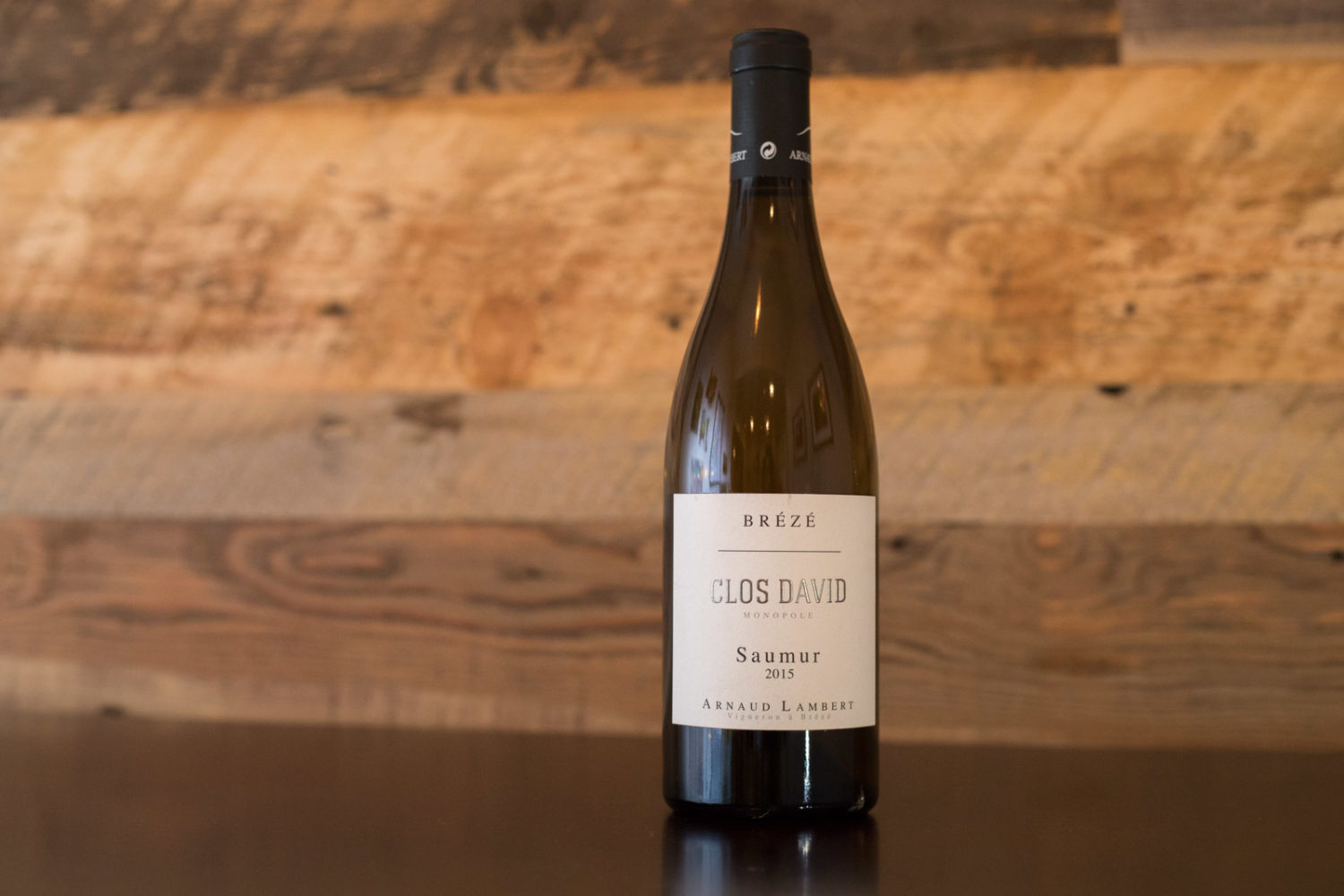
OK, enough with the “turn off your brain and just drink” wines. Sometimes you’ve got to figure some things out. Yes, deep thinking knows no season (I can’t believe I just wrote that), and there are few wines out there at the moment that I’d rather open and meditate upon than this Chenin Blanc from Essential Winemaker Arnaud Lambert. No, it won’t solve the world’s problems, but it might help put some things in perspective.
I say that because this wine exemplifies what we mean when we talk about balance. This wine is not a moving target that shifts shapes and plays sleight-of-hand tricks. It knows its identity and sticks to it, which seems reassuring right about now.
If it sounds like I am personifying this wine, I am. It’s alive, suggesting aromas similar to pear, orange zest, chamomile and marzipan. The zestiness and citrus-like acidity is balanced by depth and fullness on the palate — the wine never runs away from you, especially on the finish where the aftertaste lingers and lingers and lingers. Never mind the primacy of the Clos David at the stately Château de Brézé, one of the Loire’s most celebrated vineyards … Never mind the mad genius of Arnaud Lambert and his natural wine bona fides … This is a wine that, at least when I drank it, seemed like it wanted to stay in the room. I can think of nothing better on those summer nights when you need to think some things through.
Saumur AOC (Loire)
Grapes: Chenin Blanc (100%)
Alcohol: 12.5%
Practice: (Organic)
Rating: ★★★★★ (out of five)
Food-friendliness: Impeccable
Value: As expected
2018 Martha Stoumen “Honeymoon”
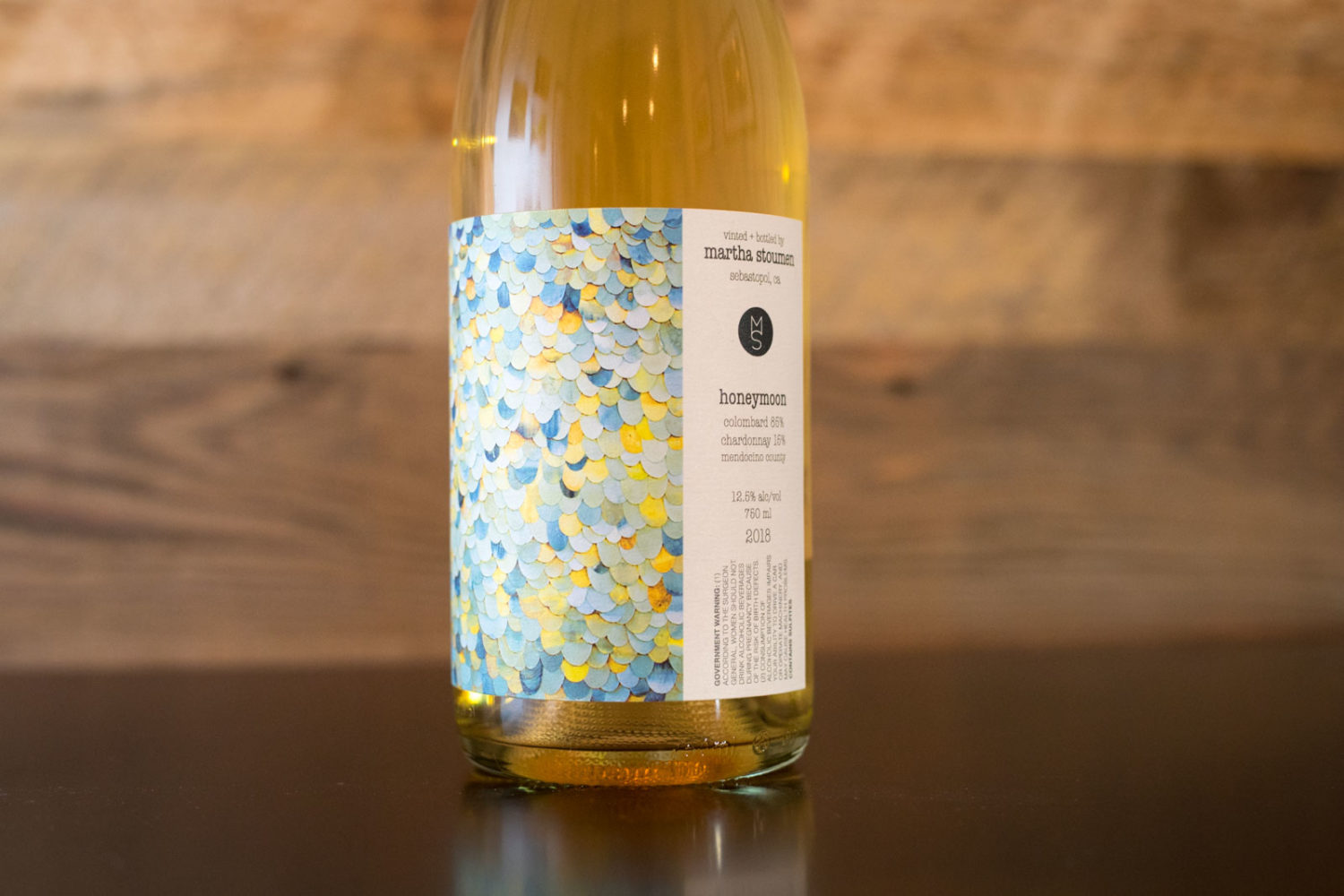
Yes, its true that the wines of California are largely absent from Opening a Bottle these days. The reason is simple: I don’t have the faintest idea about what’s going on with that scene. Really. It’s nothing personal. I’ve simply unplugged for a couple of years now — to better focus on Italian and French wines and cover them with depth — and in that time things in California have moved fast and left me in the dust. I won’t fudge expertise, but even I can see that there are some truly cool and invigorating wines being made there.
One such winery is the brainchild of half-farmer/half-négociant Martha Stoumen, who spent a significant amount of time learning winemaking under the tutelage of Giusto Occhipinti of COS in Sicily, as well as Didier Barral in Languedoc. The grapes she chooses to work with — Nero d’Avola, Colombard, Carignan and Zinfandel — are at once surprising yet traditional for Northern California.
The 2018 “Honeymoon” is unfortunately sold out on her site, but I’m writing about it anyways because (a) it is unique and you should know about it, and (b) there are still some bottles floating around at wine shops (you may as well ask …).
“Honeymoon” is made from 85% Colombard and 15% Chardonnay. The aromas are heady, reminding me of pears, yellow melon, honeycomb, purple flowers and herbs. Medium bodied and off-dry with acidity that takes its time, Honeymoon made me wonder if this is what Sauternes would taste like without residual sugar (which is probably as dumb as asking what coffee would be like without caffeine, but still, that’s where the wine led me). As it turns out, 2018 created the right conditions for some botrytis to form in the Colombard. Let’s hope it happens again in 2019, because the aromas and textures of this wine are stunning.
In the meantime, since this is a summer wines article and you’re looking for a recommendation and I’m telling you about something that is sold out, let me just suggest “anything from this menu,” because I’m kinda crazy about Martha Stoumen’s work.
Mendocino County (California)
Grapes: Colombard (85%), Chardonnay (15%)
Alcohol: 12.5%
Practice: (Organic)
Rating: ★★★★★ (out of five)
Food-friendliness: Selective
Value: Very good
NV Bibi Graetz Bollamatta
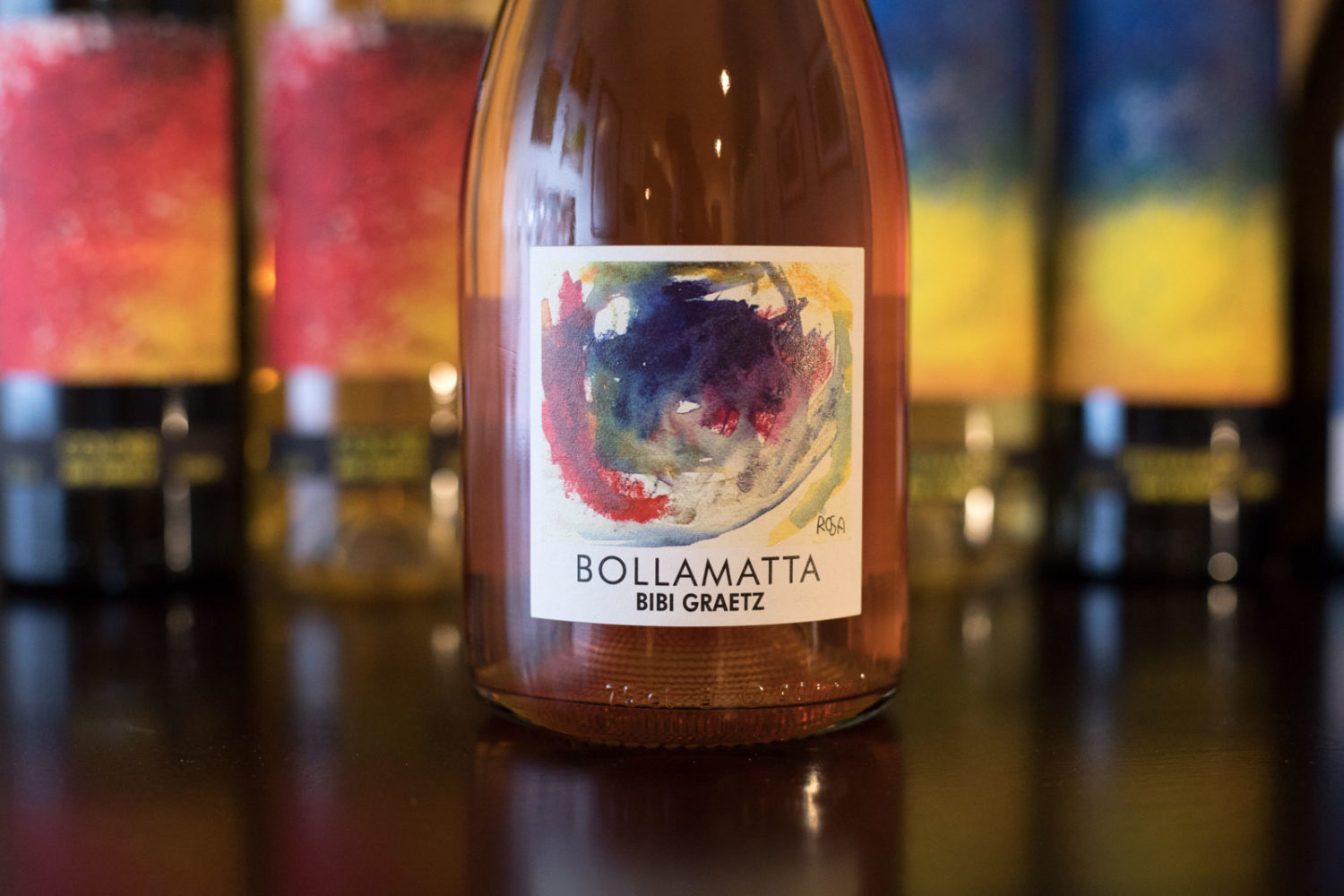
Sometimes it seems that all you need for a summer wines listicle is a handful of wines boasting a carnation-salmon color. Yes, Bibi Graetz’s charming and playful sparkler checks that box, but there was something else going on here that impressed me. This Charmat-method sparkling wine (in which secondary fermentation happens in the tank, not in the bottle) has the depth of many traditional-method wines. That’s not to say I was sensing a French boulangerie in the glass, but the complexity of the fruit in this wine — stemming from very old vines of Sangiovese and Trebbiano growing outside Florence — made it impossible to put down. With aromas recalling lime zest, sour strawberries, bitter herbs and sweet honeydew — as well as pleasant acidity and a rich finish suggesting herbs — this wine is an homage to summer splendor if I ever did taste one.
Toscana IGT (Tuscany)
Grapes: Sangiovese (90%), Trebbiano (15%)
Alcohol: 12.5%
Rating: ★★★★ 1/2 (out of five)
Food-friendliness: Versatile
Value: As expected
2014 Bodegas Ochoa Tempranillo Crianza
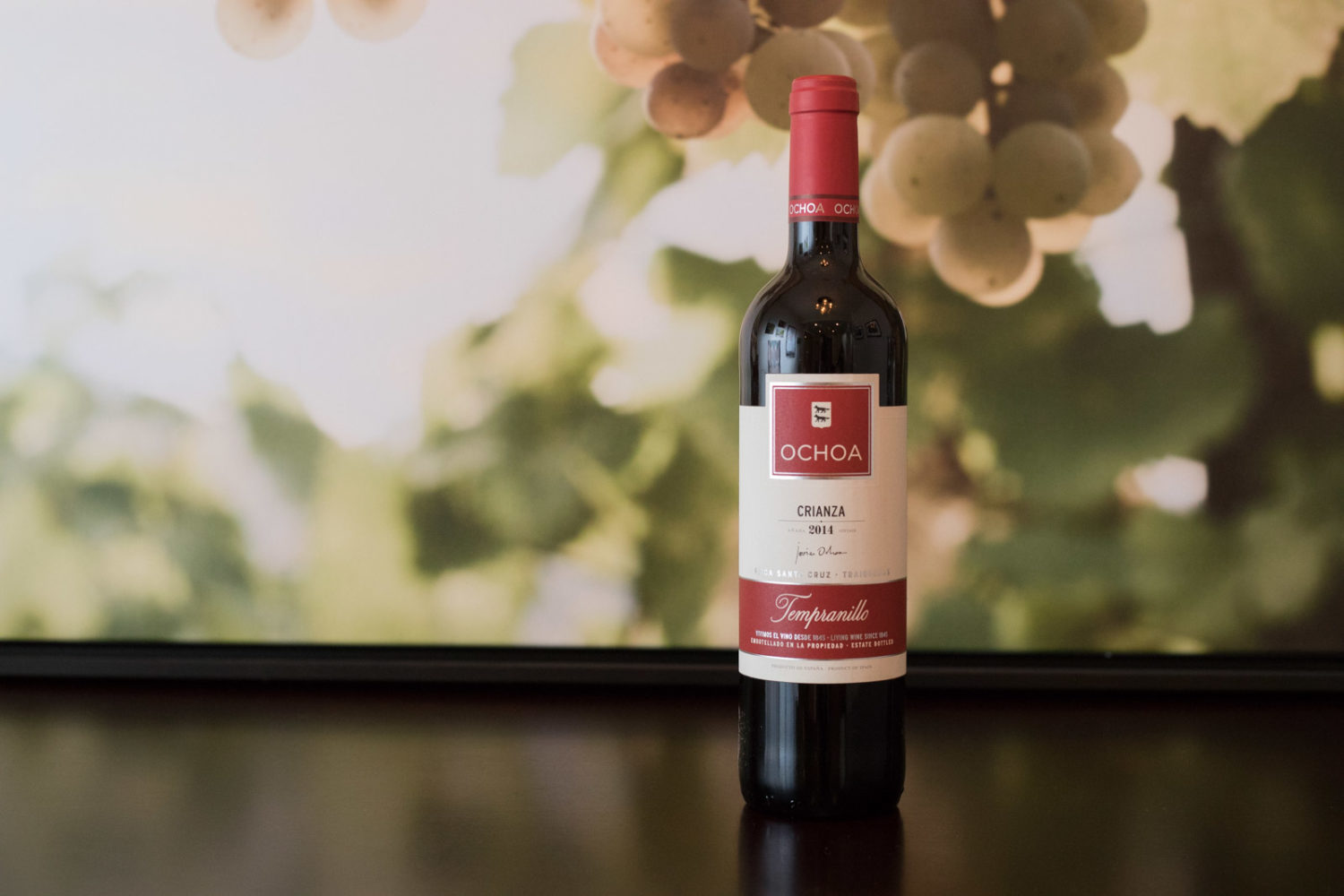
We should be drinking more wine at lunch in America. Really. What’s holding us back? We’re working from home, we’re trying to manage the anxiety of this situation … what’s wrong with a little red at 12:30pm on a Thursday?
If you answered “nothing at all,” to that question, consider this wine from Bodegas Ochoa, a family winery located in northern Spain’s Navarra region. Opened a few weeks ago for dinner, I found it pleasurable and with everything in order — but not spectacular. A simple red of moderate complexity and nice balance. With half a bottle left, I recorked it and put it in the refrigerator.
The next day I impulsively poured a glass of it cold into a high ball and drank it at lunch. What a revelation. It was like being put into a time machine to my twenties, back when my wife and I visited Spain for our first (and only) time, but also when we used to make sangria more often. There is something deeply satisfying with gulping down a cold red wine, and Tempranillo — for reasons I have yet to understand — seems perfectly adapted to the practice. Come to find out, this is totally normal practice in Spain, even embraced for fine wines.
It just goes to show that reviewing wines requires a lot of different contexts — more than just mass tastings done in a vacuum. So this summer, chill a few reds and see what happens. You’ll likely be surprised.
Navarra DO Crianza (Navara)
Grapes: Tempranillo (100%)
Alcohol: 13.5%
Rating: ★★★★ 1/2 (out of five)
Food-friendliness: Selective (room temp)/Versatile (cold)
Value: Very good
Note: Three of these wines were provided as samples (Tasca d’Almerita, Bibi Graetz and Bodegas Ochoa), while the other four were purchased by the editor. Learn more about our sample and editorial policy.

